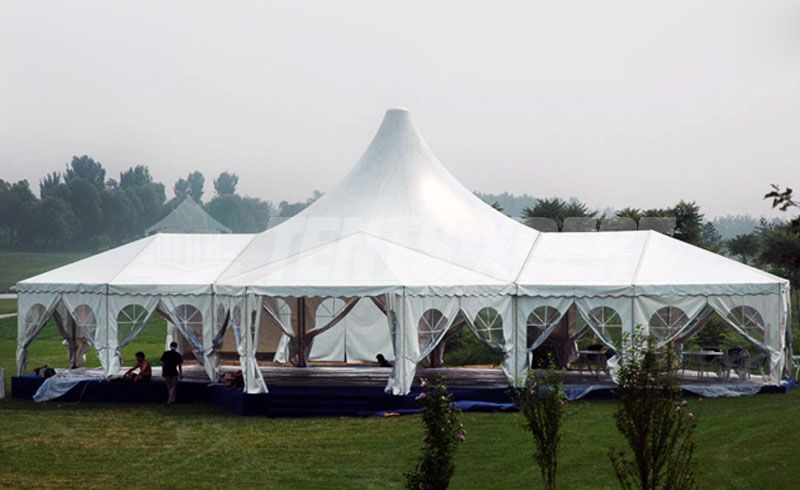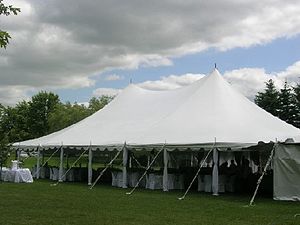Stretch Tent Hire for Weddings, Company Events, and A lot more
Stretch Tent Hire for Weddings, Company Events, and A lot more
Blog Article
Necessary Tips for Establishing and Maintaining Outdoor Camping Camping Tents
Establishing up and keeping an outdoor camping outdoor tents calls for even more than just a fundamental understanding of outside gear; it demands attention to detail and insight. From picking the suitable camping site to mastering the intricacies of outdoor tents throwing, each action is essential to ensure a risk-free and comfortable outside experience.
Selecting the Right Campsite
Selecting an optimum campground is vital for making sure a enjoyable and secure outdoor camping experience. Begin by looking for level ground, which gives a stable and comfy resting location.

Accessibility is one more key factor. Pick a website that is conveniently reachable however not excessively exposed to foot traffic to maintain personal privacy. Lastly, stick to Disappear concepts by using designated campsites whenever feasible, valuing the native environment, and guaranteeing your camping site selection has very little ecological impact. By meticulously evaluating these elements, you can improve both the safety and satisfaction of your outdoor camping adventure.
Crucial Outdoor Tents Setup Equipment

Most importantly, a trusted outdoor tents club or hammer is crucial for driving risks right into different ground types. Go with a lightweight, resilient mallet to ease the initiative needed for safeguarding your camping tent. Tent risks are an additional critical component; bring extra risks past what features your camping tent to make up varied dirt problems and unexpected demands.
A ground tarpaulin or impact is important for safeguarding the tent flooring from abrasions and wetness, extending the life of your outdoor tents. Additionally, lugging a collection of spare guylines and tensioners guarantees you can appropriately safeguard your camping tent, particularly in windy problems.
Finally, a multi-tool or a collection of standard tools including pliers, scissors, and a blade can be invaluable for taking care of unpredicted modifications or repairs. Guaranteeing you have these necessary camping tent setup devices will lead the way for a hassle-free and pleasurable camping experience.
Grasping Tent Throwing
Understanding the art of tent pitching is a basic skill that can substantially enhance your outdoor camping experience. A well-pitched tent uses not just convenience yet likewise safety and security and stability, making certain that you are well-protected from the components and any kind of unforeseen disruptions.
Begin by selecting an appropriate website: level surface complimentary from rocks, origins, and various other obstructions. Clear the ground of debris to produce a smooth surface area for your tent. Outline your tent footprint or tarp to give an additional layer of protection versus moisture and abrasions.
Put together the camping tent posts according to the manufacturer's instructions, guaranteeing that each post is completely prolonged and firmly attached - stretch tent hire. Affix the poles to the tent body, either by inserting them right into sleeves or clipping them onto hooks, relying on your tent's design. Carefully raise the tent, seeing to it that it stands uniformly well balanced and taut
Stake down the corners of the my latest blog post tent, drawing each edge tight to eliminate slack. By complying with these steps meticulously, you can achieve a secure and comfy configuration for your camping adventure.
Weatherproofing Your Tent
When confronted with uncertain weather, just how can you guarantee your tent remains a reputable haven? The key depend on reliable weatherproofing. Begin by selecting a tent with a durable rainfly that prolongs more than the sides and reaches short. This attribute will secure against wind-driven rainfall. Seam sealing is another important step; use a seam sealant to all seams to protect against water access.
Following, take into consideration the camping tent's product. Fabrics like polyester and nylon are preferred for their waterproof residential properties, but they must be treated with a long lasting water repellent (DWR) finishing. On a regular basis reapply the DWR to preserve its efficiency. In addition, a ground tarpaulin or footprint under your outdoor tents is necessary. It provides an extra layer of security against wetness permeating up from the ground.
Air flow is also essential in weatherproofing. Appropriate air movement reduces condensation buildup, which can make the interior wet. Guarantee your outdoor tents has sufficient vents and keep them open whenever possible, even during rain (stretch tent hire). Lastly, always pitch your camping tent on greater ground, staying clear of clinical depressions where water can merge. By implementing these strategies, you can maintain a comfortable and dry shelter no matter the weather.
Long-Term Camping Tent Maintenance
Ensuring the long life of your tent requires thorough and regular maintenance. Begin by thoroughly cleaning your tent after each usage. Clean debris, and use my company a soft brush to get rid of dust from the material. Spot-clean any persistent discolorations with a moderate soap service and lukewarm water, taking treatment to prevent harsh detergents that can damage the material.
Dry your tent completely before storage to stop mold and mold. Set it up in a well-ventilated location or hang it up until every component is dry. Shop your camping tent loosely in an awesome, completely dry place far from direct sunlight. Avoid compressing it tightly for extended periods, as this can break down the material and water-proof coverings.

Conclusion
Selecting an appropriate campsite, making use of crucial arrangement tools, and mastering the pitching process are essential for an effective outdoor anchor camping experience. Furthermore, weatherproofing the tent and sticking to long-term maintenance techniques, such as cleaning, drying, and evaluating for damages, guarantee longevity and performance. Embracing these strategies not just improves convenience and security during outdoor camping yet likewise contributes to the preservation of the outdoor tents, enabling for proceeded pleasure of outdoor adventures.
From picking the suitable camping site to mastering the ins and outs of tent throwing, each step is crucial to guarantee a secure and comfortable outdoor experience. While being close to a stream or lake is practical, guarantee you pitch your tent at least 200 feet away to lessen the risk of flooding and contamination. Tent stakes are an additional essential element; bring added risks beyond what comes with your camping tent to account for diverse dirt conditions and unanticipated demands.
Connect the poles to the camping tent body, either by putting them right into sleeves or clipping them onto hooks, depending on your tent's design. Furthermore, weatherproofing the tent and sticking to long-term maintenance practices, such as cleaning, drying, and evaluating for damages, ensure durability and performance.
Report this page